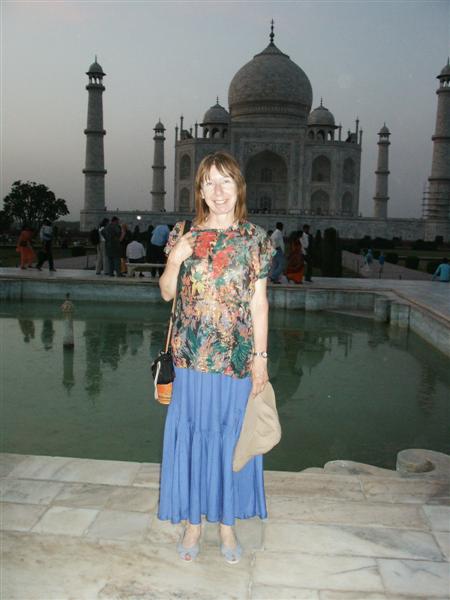Taj Mahal

Well we couldn’t visit India without seeing the Taj Mahal.


The marble seems to change to a lovely golden colour at sunset. Sunset and dawn are the best times to visit – but knowing us, we prefer dusk!

In strong sunlight, the building appears gleaming white. At dusk, the pure marble turns a beautiful golden colour.



Every little detail of the carving & inlay work is exquisite. No expense was spared; the building is inlaid with delicate floral patterns, using precious & semi precious stones, including Jade, lapis lazuli, diamonds & mother of pearl, collected from all over the world. If you visit the Taj Mahal, remember to take a torch with you. When you go inside to see the tombs in the crypt, the marble is so translucent you can shine a light through some of the internal walls.

It is amazing to think that the British Governor General of India, Lord Bentinck (1828-1835) decided to raise a bit of money by dismantling the whole structure and auctioning the marble & sculptures off, bit by bit. Luckily he could not find enough buyers, so didn’t bother with tearing down the Taj Mahal as it was then not cost-effective to do so. The only bit he managed to sell was the pinnacle on top of the dome (since replaced). I can’t help wondering; if Bentinck would have got his way & a British patron would have bought large chunks of the Taj Mahal, would they have ended up in the British Museum, adjacent to the Elgin Marbles – and if so, then would the Indian Government be pressurising us to return them?

The Taj Mahal is a classic Islamic symmetrical building built on the banks of the Yamuna river. Unfortunately the river is drying up, so it is no longer true to say it is on the river bank. The story goes that Shah Jahan had planned to build an exact copy for his own mausoleum in black marble on the opposite bank of the river. However, his son Aurangzeb put paid to that idea, by usurping the throne & imprisoning his father for the rest of his life in the nearby Agra Fort.

Shah Jahan was imprisoned in Agra Fort by his son Aurangzeb, where he could look out to see the Taj Mahal being completed for his late wife, Mumtaz Mahal. The open pavilions are great places to cool off.

The photo below was taken from the part of the fort where the Mughal emperor Shah Jahan was imprisoned by his son, Aurangzeb in 1658. Thus Shah Jahan could only see from a distance the magnificence of the Taj Mahal.

A photographer’s paradise


We were sorry to have to leave.

